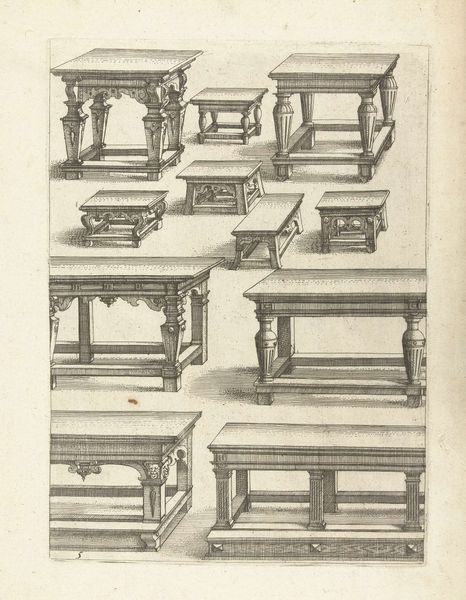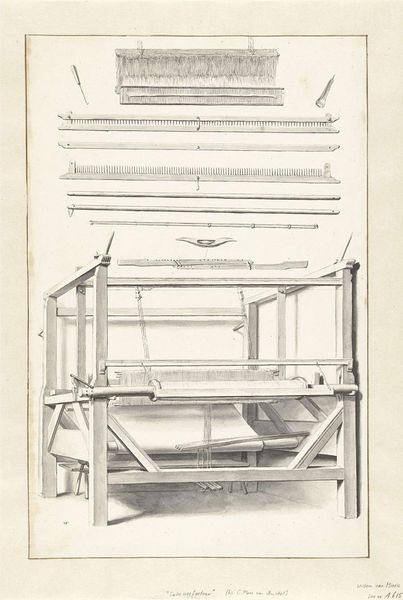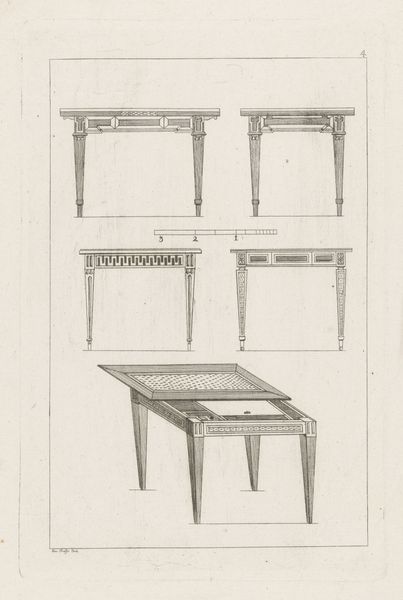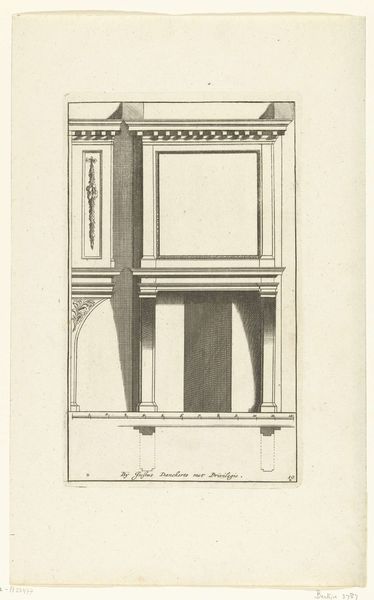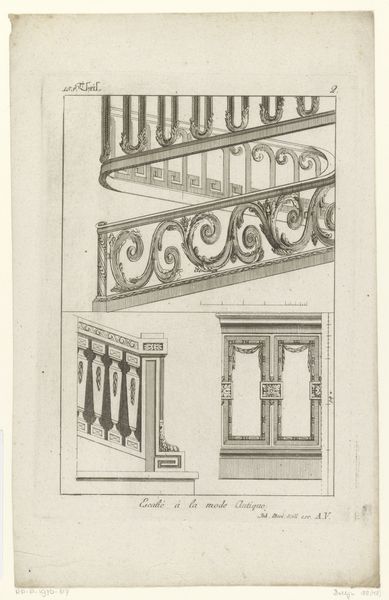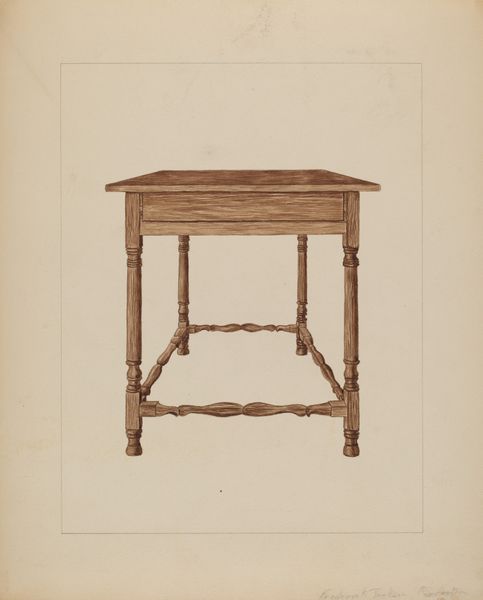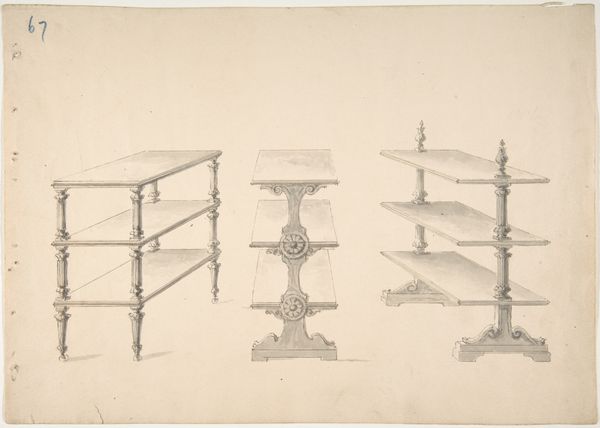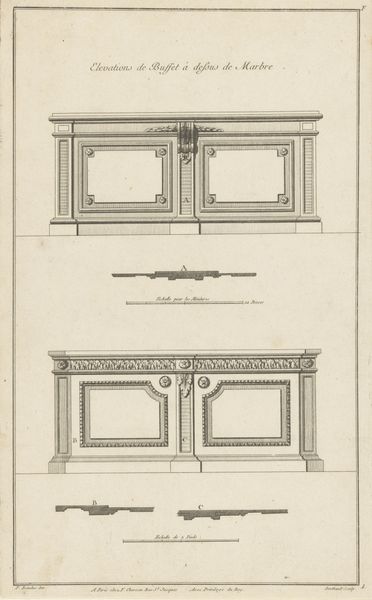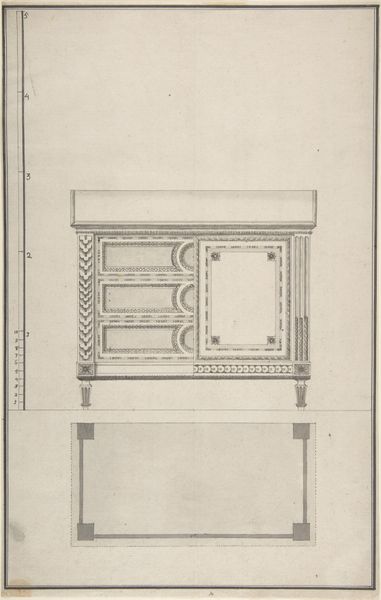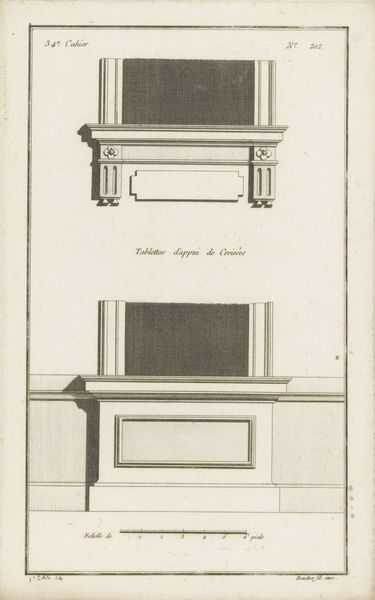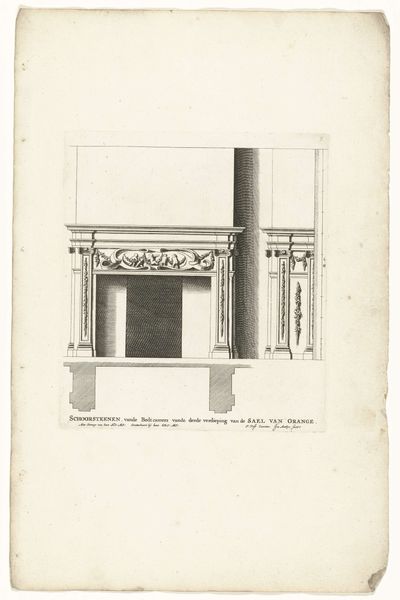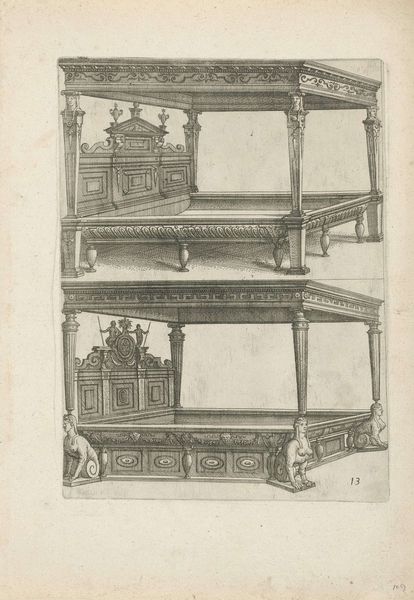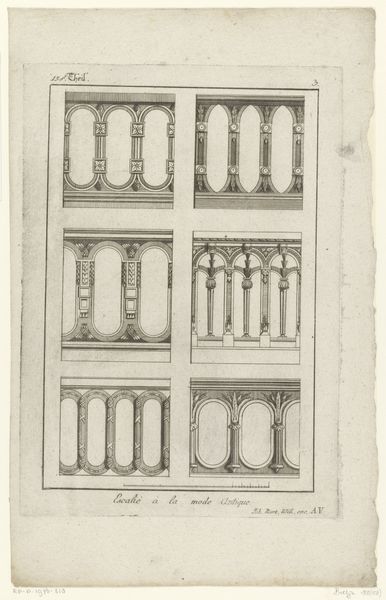
print, etching, engraving
#
aged paper
#
toned paper
# print
#
etching
#
old engraving style
#
etching
#
form
#
personal sketchbook
#
geometric
#
line
#
sketchbook drawing
#
northern-renaissance
#
engraving
Dimensions: height 259 mm, width 191 mm
Copyright: Rijks Museum: Open Domain
Curator: Here we have “Drie langwerpige tafels,” or “Three Oblong Tables,” an etching by Pieter van der Borcht I, dating from around 1583, residing here at the Rijksmuseum. What are your initial impressions? Editor: Striking! A really methodical study. I immediately focus on the textures, particularly how the light defines the wooden surfaces. The artist truly emphasized their physical construction with simple line and tone. Curator: The placement of these tables really reflects Northern Renaissance interests in form and geometry, especially concerning practical design. The piece reveals shifting societal values tied to artisanal practice. How might the design influence its utility and therefore a table’s worth in the context of the time? Editor: Exactly! The visible joints and pegged construction point directly to the craftsperson’s labor and material investment. One begins to consider who produced these items and how that manufacture shaped socio-economic relationships. Are these everyday items, or markers of a patron’s taste and status? Curator: I think it would be impossible to ignore the potential influence of architectural renderings that also often depict not only buildings but, sometimes, interior spaces and furnishings of the day. One should note that books showing examples of design gained influence amongst merchant classes. Consider what role this sort of print may play in reflecting the shift in societal tastes that took hold in the 16th century, giving those with more modest means the desire for beautifully made and intentionally designed things. Editor: It prompts us to consider the accessibility and distribution of design knowledge during that period. As consumers became increasingly distant from material production and the conditions shaping the making of these items, was knowledge further divided along social lines? The textures and structure rendered here really help frame those inquiries. Curator: Absolutely. Looking at it today, "Three Oblong Tables" demonstrates a beautiful nexus of practical craftsmanship, nascent industrialism, class tensions, and artistic rendering during a transformative era in design history. Editor: It leaves me contemplating the endurance of utilitarian form and the stories embedded in even the most unassuming household objects.
Comments
No comments
Be the first to comment and join the conversation on the ultimate creative platform.
